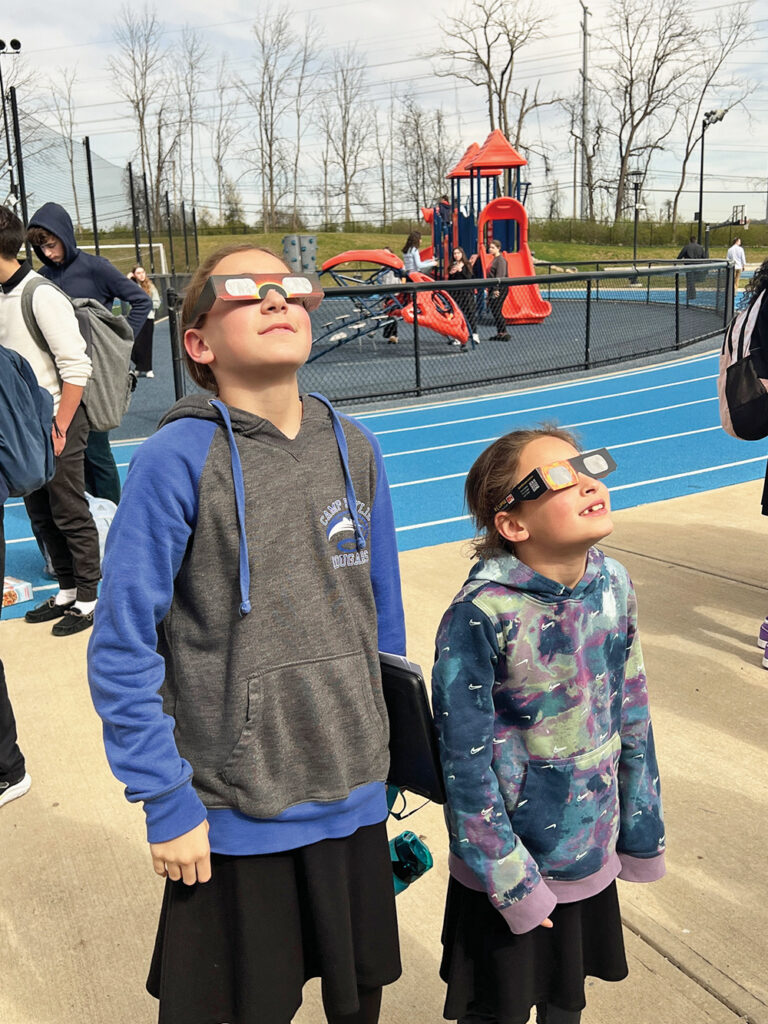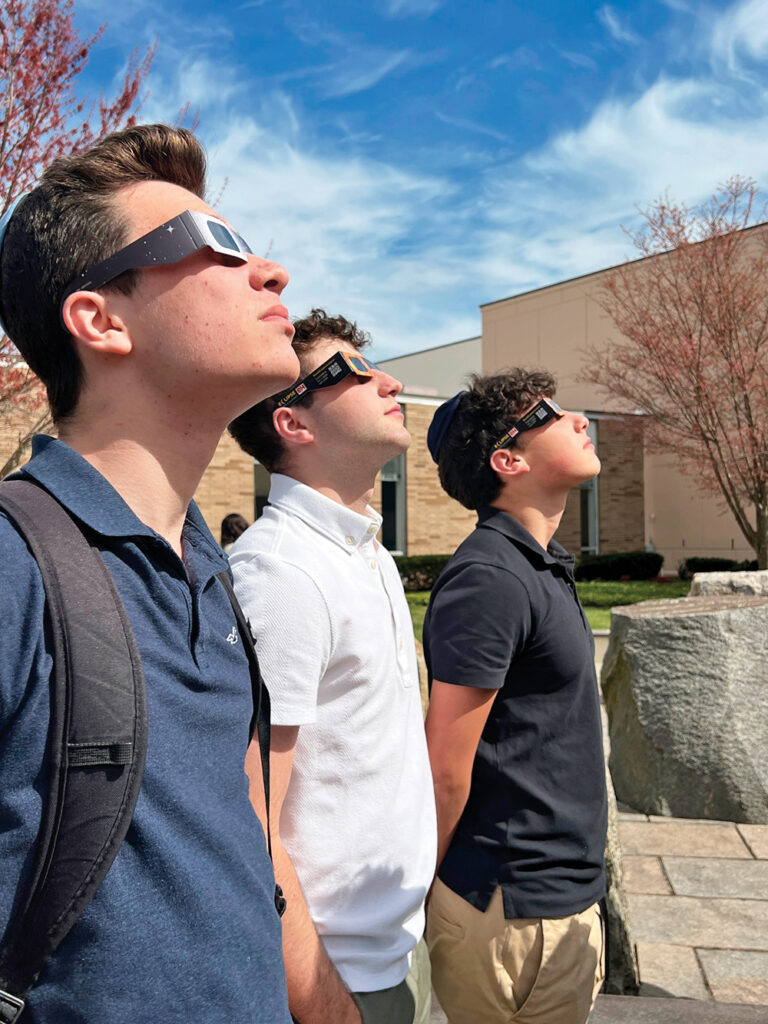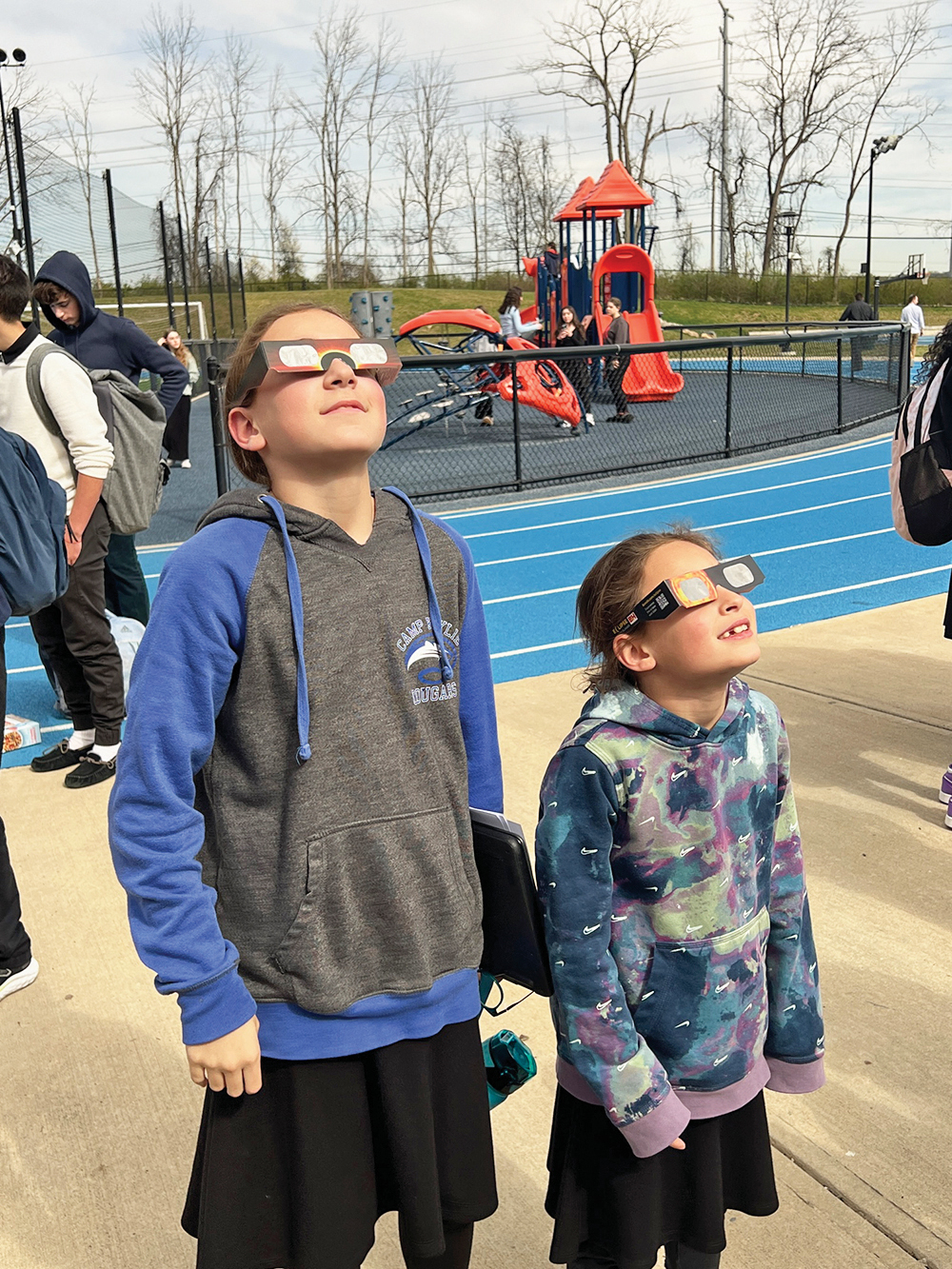
To prepare for the solar eclipse, dedicated science lessons were taught to all early childhood and lower school students, utilizing props and videos. Students learned how they may experience light and temperature changes during the eclipse, eclipse safety and how to use eclipse sunglasses. Lower school students were provided with eclipse sunglasses and dismissed as the eclipse approaches 90% totality.
Middle school science classes had a lesson on solar and lunar eclipses. They discussed why eclipses happen, the differences between solar and lunar eclipses, and the unique types within each category. To prepare students to experience the eclipse safely, they discussed the proper precautions and the dangers of viewing solar eclipses without protective lenses. Middle school students were provided with eclipse sunglasses and dismissed as the eclipse approaches 90% totality.

RKYHS science teachers dedicated instructional time in the past two weeks in anticipation of the coming eclipse. In particular, the physics classes took a deep dive into the coming eclipse, learning details about the relative motion of the Earth moon, and sun in the context of their relative diameters, distances from each other and how the “tiny” moon can eclipse the view of the sun from the Earth altogether. By plotting and analyzing certain data using spreadsheets, the students learned how to predict when and where upcoming eclipse events would occur and the different types of eclipses.
RKYHS students prepared pinhole eclipse viewers using cereal boxes. These viewers allow safe, indirect viewing of the eclipse event in real time.Together with their classes, RKYHS students went on a “field trip” to the Bat Sheva and Murray Halpern Field in the outdoor recreational facilities with their pinhole eclipse viewers, equipped with eclipse eyewear protection and safely watched this rare phenomenon.














